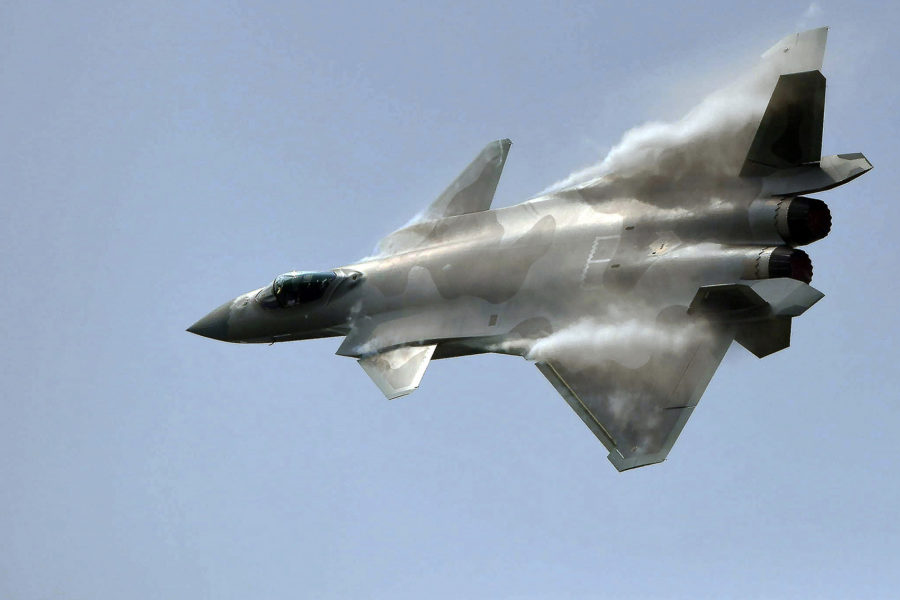While most of the world lost ground in defense spending in 2022—mainly due to inflation—both China and many nations in Europe achieved real growth, and China’s spending level set a record, according to analysis by the independent, London-based International Institute for Strategic Studies.
China’s spending and “military modernization remains the principal area of concern for Washington,” the IISS said in a summary of its findings.
The seven percent increase in China’s defense spending from 2021 to 2022 is its largest in “absolute terms” going back 30 years, according to the report. In real terms—accounting for inflation—China spent $16 billion more in 2022 than 2021. China’s neighbors, particularly Japan and South Korea, significantly increased their own defense budgets in response.
China’s reported spending is also significantly less than its actual spending, because it does not count many expenditures, such as certain kinds of research and development, space, and civil/military investments as being defense-related. The country’s self-reported defense spending was $242.4 billion in 2022, but the IISS estimates its actual military outlays were closer to $360 billion.
Those numbers still don’t take into account the fact that China spends far less on pay and amenities for its troops than other countries, with more of its funds going toward procuring hardware and conducting research and development.
At $766.6 billion, the U.S. still outspent the next 10 countries combined on military accounts, but its relatively lavish spending on pay and amenities and its higher costs of goods, relative to command economies like China’s, accounts for some of that imbalance.
Russia’s military spending in 2022 was self-reported at $87.9 billion, but the IISS said its true spending is likely well more than double that figure, at $192 billion, and again, its spending on pay and benefits for its mostly-conscript forces is well below that of other countries.
Inflation’s Bite
Inflation dominated any discussion of defense budgets in 2022, IISS said, noting that although many countries announced new investments and increases in spending based on absolute amounts, global defense spending as a whole declined in real terms for the second consecutive year.
“Soaring inflation has wiped billions from the real value of these investments and caused global defense spending to contract in real terms for the second consecutive year in 2022,” the report noted.
Using 2015 as a base year, “the effective purchasing power of global defense spending has been eroded by almost $850 billion, cumulatively, since 2017,” and by about $66 billion just in the last year, the IISS reported. “As inflation abates, policymakers will have greater scope to pursue procurement priorities, but will still need to balance threat drivers against lingering fiscal challenges.”
Globally, the nations of the world are spending more on defense and getting less. While they laid out $2 trillion for defense in 2022, that bought only $1.69 trillion worth of military goods and services measured in 2015 constant dollars.
The IISS also noted an increase in the use “off budget … special funds” as countries seek to rapidly increase their military spending. Such measures “reduce accountability and transparency” and complicate efforts like the IISS’s to collect comprehensive information, it noted.
On a regional level, “European defense spending increased in real terms for the eighth consecutive year, although the rate of growth has slowed markedly from 3.5 percent in 2021 to 0.8 percent in 2022, again because of inflation effects,” the IISS said, noting the response to Russia’s invasion of Ukraine.
In Asia, China’s new aircraft carrier generated headlines, and “its investments in additional and more complex naval vessels continues apace, while its air force is also improving its capabilities: numbers of J-20A combat aircraft have increased further and China has begun to field advanced military aircraft with domestically produced jet-engines,” the IISS said.
In response, Japan is increasing spending while also seeking “new partnerships, including with the U.K.; and Australia continues to work with the U.S. and U.K.” to obtain nuclear-powered submarines.
In the Middle East, where countries are typically high-spenders on defense, budgets collectively shrank about two percent per year, in real terms, for the last three years. Saudi Arabia and Turkey, for example, spent 8.7 percent and 6.9 percent less, respectively, on defense in 2022 than in 2021.
